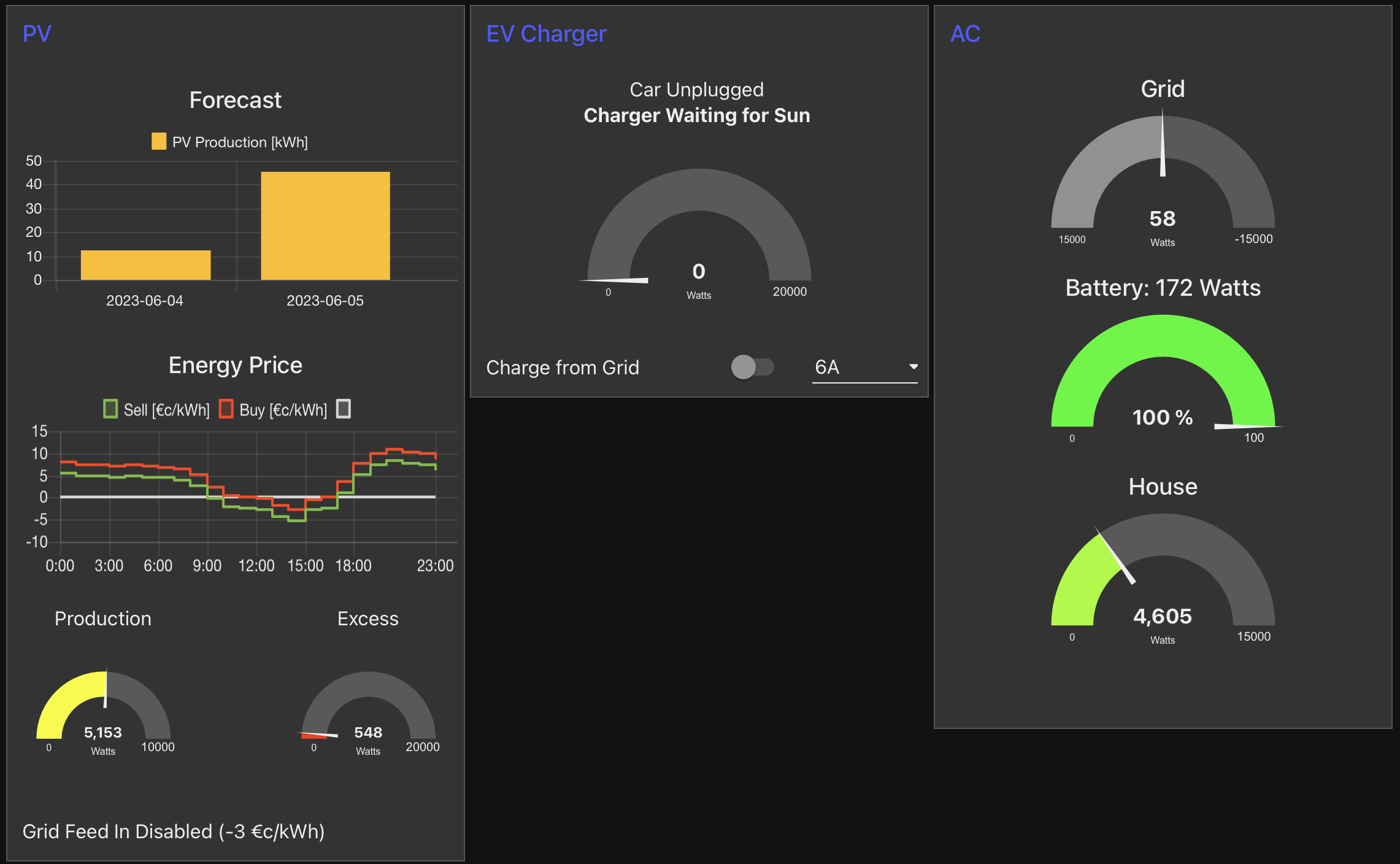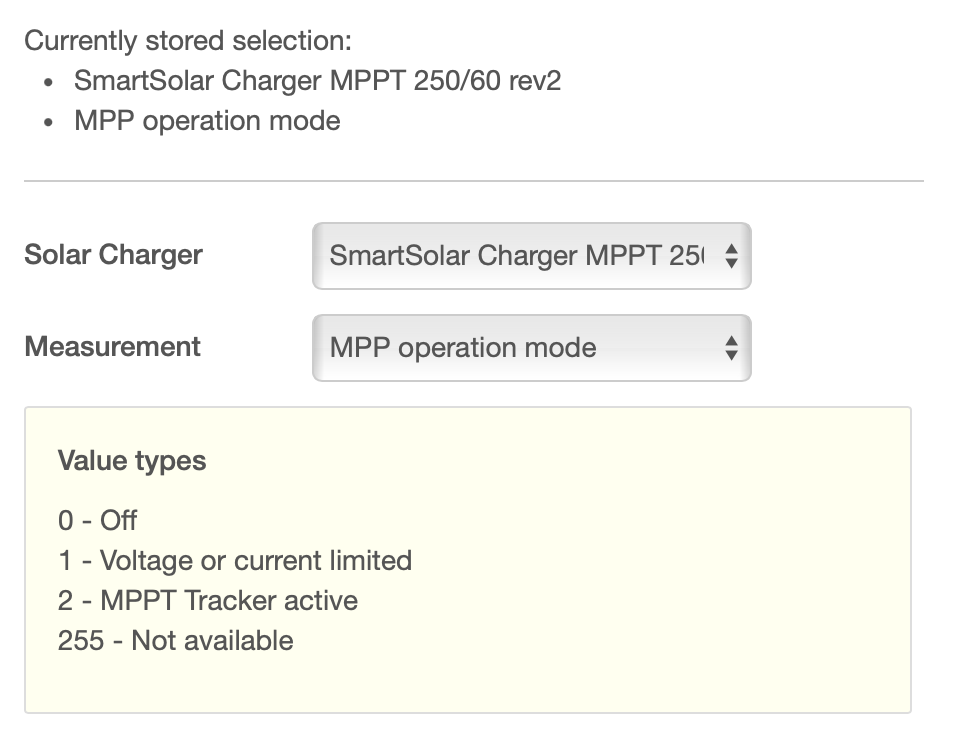Hello World,
I would like to understand if there is a DBUS path or Victron Node RED node or parameter that can be observed to see when ESS starts throttling MPPT charger. I have looked everywhere and I do not seem to find anything related.
To explain why I need this.
When grid feed-in is enabled MPPT is operating at full power, and by looking at Multiplus AC Out and MPPT power output I can see how much Excess PV there is available. I can later use the excess PV to enable/disable and drive custom EV charger current to only charge a car with excess PV. It works great and I can share the Node RED workflow if anybody is interested.
However, now that the European summer season is coming, spot energy prices will mostly go negative during the PV production day, and therefore grid feed in will need to be disabled most of the day to avoid being penalised for grid feed in.
Now when the house battery is full, ESS starts throttling the MPPTs and their power output pretty much matches the house AC loads. Which is great. But that makes it impossible to compute how much possible PV excess is there.
So is there a way to observe that
a/ MPPT throttling is activated
b/ How much of the throttling is in place - to extrapolate potential PV power?
I am attaching an example screenshot from my dashboard. House battery is full, grid idle (grid feed in disabled because of negative sell price), and excess PV low since MPPT is throttled to match house AC load. Therefore the EV charger says "Waiting for Sun" which is not actually true since there is plenty sun.
thanks for any hints,
Martin


